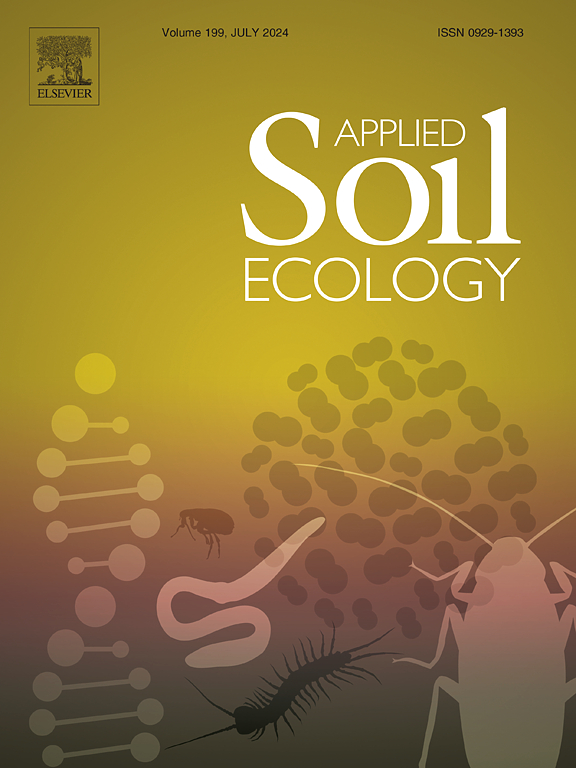“通过土壤突发呼吸剖面可靠地预测土地利用”
IF 5
2区 农林科学
Q1 SOIL SCIENCE
引用次数: 0
摘要
关于土壤呼吸的研究已经发表了100多年,但很少有研究调查了在测试期间呼吸速率的变化如何阐明微生物对干湿事件的反应并将其与土地利用联系起来。我们的研究使用“突发”呼吸测量的分割剖面检查了加拿大大西洋地区土地利用(LU)和最大潜在土壤呼吸之间的相互作用。我们发现,作物农业呼吸在孵育的前24 h达到高峰,而森林在孵育的第2和第3 24 h达到高峰。牧草呼吸为中介作用,在前两个24 h达到高峰。这些特定的比例呼吸间隔对于使用机器学习模型成功预测作物农业,森林和牧场的LUs至关重要,其精度相当于综合土壤理化参数。湿地呼吸谱与最小预测能力不一致,可能是由于矿物和碳(C)含量的高变异性。虽然管理土壤的早期(24 h)呼吸在比例上最大,表明管理对增加呼吸的影响,但72 h内的绝对总呼吸在自然土壤中最大,表明它们对单位面积大气C库的假定贡献可能更大。这项研究指出了一种评估农业和自然管理对土壤影响的新方法,该方法认识到土壤C功能状态的一致梯度与土地利用和土地管理直接相关。本文章由计算机程序翻译,如有差异,请以英文原文为准。
“Land use is reliably predicted by soil burst respiration profiles”
Studies examining soil respiration across land uses have been published for over 100 years, but few studies have examined how variability in rates of respiration during a test period could elucidate microbial responses to wet-dry events and connect them to land use. Our study examined the interplay between land uses (LU) and maximum potential soil respiration across Atlantic Canada using partitioned profiles of ‘burst’ respiration measurements. We found that Crop Agriculture respiration peaked in the first 24 h of the incubation, while Forest peaked during the second and third 24 h periods. Pasture respiration was intermediary, peaking in the first two 24 h periods. These specific proportional respiration intervals were crucial in successfully predicting Crop Agriculture, Forest and Pasture LUs using machine learning models, with accuracy equivalent to comprehensive soil physicochemical parameters. Wetland respiration profiles were inconsistent with minimal predictive power, likely due to high variability of mineral and carbon (C) content. While early (24 h) respiration was proportionally largest for managed soils, indicating the impact of management in increasing respiration, absolute total respiration over 72 h was largest for natural soils, indicating their likely larger putative contribution, per unit area, to the atmospheric C pool. This study points to a novel approach for assessing the effect of agricultural and natural management on soils, that recognizes consistent gradients in the functional status of soil C as directly linked to land use and land management.
求助全文
通过发布文献求助,成功后即可免费获取论文全文。
去求助
来源期刊

Applied Soil Ecology
农林科学-土壤科学
CiteScore
9.70
自引率
4.20%
发文量
363
审稿时长
5.3 months
期刊介绍:
Applied Soil Ecology addresses the role of soil organisms and their interactions in relation to: sustainability and productivity, nutrient cycling and other soil processes, the maintenance of soil functions, the impact of human activities on soil ecosystems and bio(techno)logical control of soil-inhabiting pests, diseases and weeds.
 求助内容:
求助内容: 应助结果提醒方式:
应助结果提醒方式:


